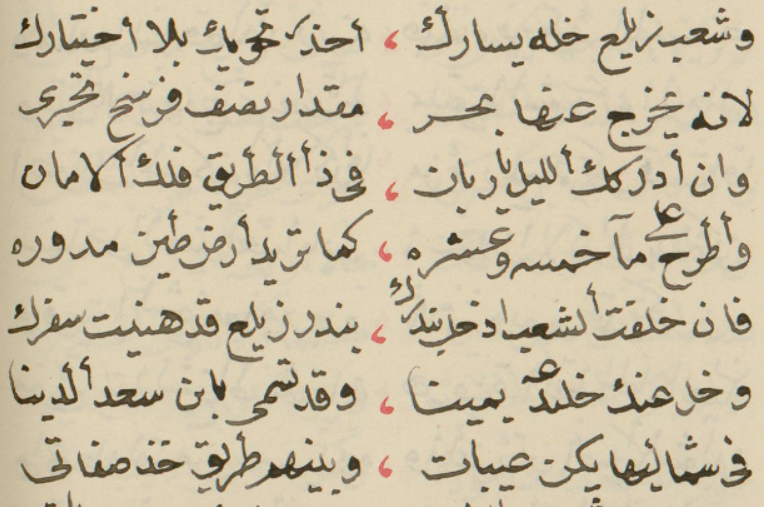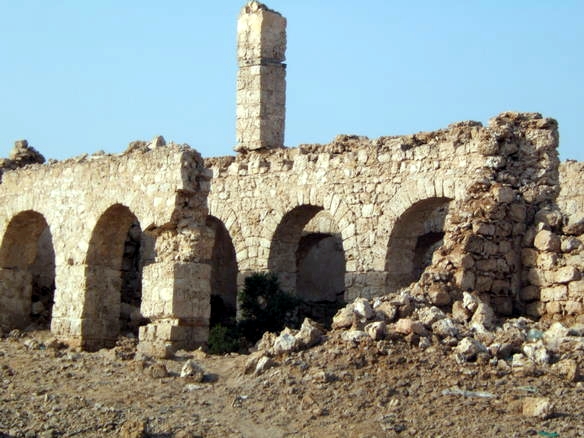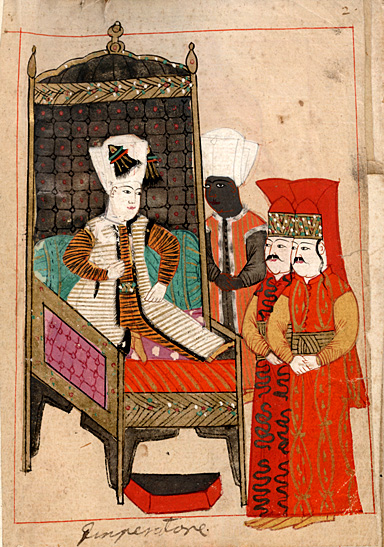|
Umar Din
ʿUmar Dīn ( ar, عمر الدين), reigned 1526–1553, was a sultan ruling over the Sultanate of Adal in the Horn of Africa. He was the younger brother of Abu Bakr ibn Muhammad. Reign After his brother Abu Bakr ibn Muhammad was killed by Imam Ahmad ibn Ibrahim al-Ghazi (1506–1543) in 1526, Umar Din was made sultan by Imam Ahmad. He ruled as a puppet king, with Imam Ahmad wielding true power. He was succeeded by his son Ali ibn Umar Din in 1553, who in turn was succeeded by his brother Barakat ibn Umar Din, the last member of the Walashmaʿ dynasty The Walashma dynasty was a medieval Muslim dynasty of the Horn of Africa. Founded in 1285, it was centered in Zeila, and established bases around the Horn of Africa. It governed the Ifat and Adal Sultanates in what are present-day Somaliland, ..., in 1555.. Notes Works cited * * {{DEFAULTSORT:Umar Din 16th-century monarchs in Africa Sultans of the Adal Sultanate 16th-century Somalian people ... [...More Info...] [...Related Items...] OR: [Wikipedia] [Google] [Baidu] |
Adal Sultanate
The Adal Sultanate, or the Adal Empire or the ʿAdal or the Bar Saʿad dīn (alt. spelling ''Adel Sultanate, ''Adal ''Sultanate'') () was a medieval Sunni Muslim Empire which was located in the Horn of Africa. It was founded by Sabr ad-Din II after the fall of the Sultanate of Ifat. The kingdom flourished circa 1415 to 1577.. The sultanate and state were established by the local inhabitants of Zeila. or the Harar plateau. At its height, the polity under Sultan Badlay controlled the territory stretching from Somaliland to the port city of Suakin in Sudan. The Adal Empire maintained a robust commercial and political relationship with the Ottoman Empire. Etymology Adal is believed to be an abbreviation of Havilah. Eidal or Aw Abdal, was the Emir of Harar in the eleventh century. In the thirteenth century, the Arab writer al-Dimashqi refers to the Adal Sultanate's capital, Zeila, by its Somali name "Awdal" ( so, "Awdal"). The modern Awdal region of Somaliland, which was p ... [...More Info...] [...Related Items...] OR: [Wikipedia] [Google] [Baidu] |
Abu Bakr Ibn Muhammad
Abū Bakr ibn Muḥammad ( ar, أبو بكر بن محمد), reigned 1525–1526, was a sultan of the Sultanate of Adal in the Horn of Africa. The historian Richard Pankhurst credits Abu Bakr with founding the city of Harar, which he made his military headquarters in 1520. Reign Abu Bakr organized Somali troops, then attacked sultan Garad Abun Adashe and killed him, making himself sultan. However, his control over Adal was disputed by Imam Ahmad ibn Ibrahim al-Ghazi, who eventually defeated Abu Bakr and killed him. The Imam then made Abu Bakr's younger brother, Umar Din, the new sultan, although the latter only reigned as a puppet king.; cf. . See also *Walashmaʿ dynasty *Siege of Hubat The siege of Hubat was a military campaign carried out by Abu Bakr ibn Muhammad, sultan of Adal Sultanate, against the Hubat principality. The siege lasted more than a week in which Hubat leader Garad Umar Din would lose his life, resulting in a ... Notes Works cited * * Year of birth unk ... [...More Info...] [...Related Items...] OR: [Wikipedia] [Google] [Baidu] |
Ali Ibn Umar Din
ʿAli ibn ʿUmar Dīn ( ar, علي بن عمر الدين), reigned 1553–1555, was a sultan of the Sultanate of Adal in the Horn of Africa. He was the son of Umar Din and the brother of Barakat ibn Umar Din Barakāt ibn ʿUmar Dīn ( ar, بركات بن عمر الدين), reigned 1555–1559, was a nominal sultan of the Sultanate of Adal in the Horn of Africa. A son of Umar Din () and a brother of Ali ibn Umar Din (), he was the last known membe .... p. 92, n.4. See also * Walashmaʿ dynasty References Sultans of the Adal Sultanate 16th-century monarchs in Africa 16th-century Somalian people {{Africa-hist-stub ... [...More Info...] [...Related Items...] OR: [Wikipedia] [Google] [Baidu] |
Walashmaʿ Dynasty
The Walashma dynasty was a medieval Muslim dynasty of the Horn of Africa. Founded in 1285, it was centered in Zeila, and established bases around the Horn of Africa. It governed the Ifat and Adal Sultanates in what are present-day Somaliland, Djibouti and eastern Ethiopia. Genealogical traditions According to some, the Walashma princes of Ifat and Adal possessed Arab genealogical traditions. In terms of lineage, Walashma traditions trace descent from Bani Makhzoum Qureishitic Tribe by El Maqrisi in his book Kit-āb-alilmām-biakhbār-man-biarḍ-alḤabashah-min-mulūk-alIslām; But Ifat Sultanate trace descent from Akīl ibn Abī Tālib, the brother of the Caliph ʿAlī and Djaʿfar ibn Abī Tālib, by El Maqrisi in his book Kit-āb-alilmām-biakhbār-man-biarḍ-alḤabashah-min-mulūk-alIslām. The latter was among the earliest Muslims to settle in the Horn region. However, the semi-legendary apologetic History of the Walasma asserts that ʿUmar ibn-Dunya-hawz had as a p ... [...More Info...] [...Related Items...] OR: [Wikipedia] [Google] [Baidu] |
Islam
Islam (; ar, ۘالِإسلَام, , ) is an Abrahamic religions, Abrahamic Monotheism#Islam, monotheistic religion centred primarily around the Quran, a religious text considered by Muslims to be the direct word of God in Islam, God (or ''Allah'') as it was revealed to Muhammad, the Muhammad in Islam, main and final Islamic prophet.Peters, F. E. 2009. "Allāh." In , edited by J. L. Esposito. Oxford: Oxford University Press. . (See alsoquick reference) "[T]he Muslims' understanding of Allāh is based...on the Qurʿān's public witness. Allāh is Unique, the Creator, Sovereign, and Judge of mankind. It is Allāh who directs the universe through his direct action on nature and who has guided human history through his prophets, Abraham, with whom he made his covenant, Moses/Moosa, Jesus/Eesa, and Muḥammad, through all of whom he founded his chosen communities, the 'Peoples of the Book.'" It is the Major religious groups, world's second-largest religion behind Christianity, w ... [...More Info...] [...Related Items...] OR: [Wikipedia] [Google] [Baidu] |
Sultan
Sultan (; ar, سلطان ', ) is a position with several historical meanings. Originally, it was an Arabic abstract noun meaning "strength", "authority", "rulership", derived from the verbal noun ', meaning "authority" or "power". Later, it came to be used as the title of certain rulers who claimed almost full sovereignty (i.e., not having dependence on any higher ruler) without claiming the overall caliphate, or to refer to a powerful governor of a province within the caliphate. The adjectival form of the word is "sultanic", and the state and territories ruled by a sultan, as well as his office, are referred to as a sultanate ( '. The term is distinct from king ( '), despite both referring to a sovereign ruler. The use of "sultan" is restricted to Muslim countries, where the title carries religious significance, contrasting the more secular ''king'', which is used in both Muslim and non-Muslim countries. Brunei and Oman are the only independent countries which retain the ti ... [...More Info...] [...Related Items...] OR: [Wikipedia] [Google] [Baidu] |
Horn Of Africa
The Horn of Africa (HoA), also known as the Somali Peninsula, is a large peninsula and geopolitical region in East Africa.Robert Stock, ''Africa South of the Sahara, Second Edition: A Geographical Interpretation'', (The Guilford Press; 2004), p. 26 Located on the easternmost part of the African mainland, it is the fourth largest peninsula in the world. It is composed of Ethiopia, Eritrea, Somalia and Djibouti; broader definitions also include parts or all of Kenya, Sudan, South Sudan, and Uganda. The term Greater Horn Region (GHR) can additionally include Burundi, Rwanda, and Tanzania. It lies along the southern boundary of the Red Sea and extends hundreds of kilometres into the Guardafui Channel, Gulf of Aden, and Indian Ocean and shares a maritime border with the Arabian Peninsula of Western Asia. Names This peninsula has been known by various names. Ancient Greeks and Romans referred to it as Regio Aromatica or Regio Cinnamonifora due to the aromatic plants or as Regio I ... [...More Info...] [...Related Items...] OR: [Wikipedia] [Google] [Baidu] |
Imam Ahmad Ibn Ibrahim Al-Ghazi
Ahmad ibn Ibrahim al-Ghazi ( so, Axmed Ibraahim al-Qaasi or Axmed Gurey, Harari: አሕመድ ኢብራሂም አል-ጋዚ, ar, أحمد بن إبراهيم الغازي ; 1506 – 21 February 1543) was an imam and general of the Adal Sultanate. Imam Ahmad (commonly named Ahmed ''Gurey'' ''in Somali, and ''Gura'' in Afar, both meaning "the left-handed" or "the southpaw")'', invaded the Ethiopian Empire under the Sultanate of Adal during the Ethiopian-Adal War. Ethnicity Imam Ahmad is regarded by most scholars as an ethnic Somali. However, a few historians have dismissed the Somali theory. Merid Wolde Aregay argued Ahmed ibn Ibrahim al-Ghazi belonged to the Harla dynasty of rulers through his father. Mohammed Hassan also states Ahmed was the son of Garad Ibrahim, a provincial governor of Sim in Harla realm. According to Taddesse Tamrat, although various Somali clans were involved in the conquest, Ahmed was not a Somali and had links to the Semitic-speaking Wâlasma aristo ... [...More Info...] [...Related Items...] OR: [Wikipedia] [Google] [Baidu] |
Puppet King
A puppet monarch is a majority figurehead who is installed or patronized by an imperial power to provide the appearance of local authority but to allow political and economic control to remain among the dominating nation. A figurehead monarch, as source of legitimacy and possibly divine reign, has been the used form of government in several situations and places of history. There are two basic forms of using puppets as monarchs (rulers, kings, emperors): * A figurehead in which the monarch is a puppet of another person or a group in the country who rules instead of the nominal ruler. * A puppet government under a foreign power. Examples of the first type are the Emperors who were the puppets of the shōguns of Japan and the kings who were the puppets of the Mayor of Palace in the Frankish kingdom. Client kingdoms under the Roman Republic and Roman Empire and the British Empire's colonial relationship with King Farouk of Egypt in the 1950s are examples of the second type. L ... [...More Info...] [...Related Items...] OR: [Wikipedia] [Google] [Baidu] |
Barakat Ibn Umar Din
Barakāt ibn ʿUmar Dīn ( ar, بركات بن عمر الدين), reigned 1555–1559, was a nominal sultan of the Sultanate of Adal in the Horn of Africa. A son of Umar Din () and a brother of Ali ibn Umar Din (), he was the last known member of the Walashmaʿ dynasty. In 1555, Barakat and Ali Jamal ibn al-Imam Ahmad led an army into Dawaro with the intent of taking it from the Ethiopians. However, he was defeated by the Governor of Dawaro. When Nur ibn Mujahid invaded the Ethiopian Empire in 1559, sultan Barakat held Harar against the army of Hamalmal, who had been sent there by his cousin, Emperor Gelawdewos Galawdewos ( gez, ገላውዴዎስ, 1521/1522 – 23 March 1559) also known as Mar Gelawdewos ( amh, ማር ገላውዴዎስ), was Emperor of Ethiopia from 3 September 1540 until his death in 1559, and a member of the Solomonic dynasty. His .... Dejazmatch Halmalal and Ras Fasil killed him and sacked the city. References Sultans of the Adal Sul ... [...More Info...] [...Related Items...] OR: [Wikipedia] [Google] [Baidu] |
16th-century Monarchs In Africa
The 16th century begins with the Julian year 1501 ( MDI) and ends with either the Julian or the Gregorian year 1600 ( MDC) (depending on the reckoning used; the Gregorian calendar introduced a lapse of 10 days in October 1582). The 16th century is regarded by historians as the century which saw the rise of Western civilization and the Islamic gunpowder empires. The Renaissance in Italy and Europe saw the emergence of important artists, authors and scientists, and led to the foundation of important subjects which include accounting and political science. Copernicus proposed the heliocentric universe, which was met with strong resistance, and Tycho Brahe refuted the theory of celestial spheres through observational measurement of the 1572 appearance of a Milky Way supernova. These events directly challenged the long-held notion of an immutable universe supported by Ptolemy and Aristotle, and led to major revolutions in astronomy and science. Galileo Galilei became a champion ... [...More Info...] [...Related Items...] OR: [Wikipedia] [Google] [Baidu] |
Sultans Of The Adal Sultanate
Sultan (; ar, سلطان ', ) is a position with several historical meanings. Originally, it was an Arabic abstract noun meaning "strength", "authority", "rulership", derived from the verbal noun ', meaning "authority" or "power". Later, it came to be used as the title of certain rulers who claimed almost full sovereignty (i.e., not having dependence on any higher ruler) without claiming the overall caliphate, or to refer to a powerful governor of a province within the caliphate. The adjectival form of the word is "sultanic", and the state and territories ruled by a sultan, as well as his office, are referred to as a sultanate ( '. The term is distinct from king ( '), despite both referring to a sovereign ruler. The use of "sultan" is restricted to Muslim countries, where the title carries religious significance, contrasting the more secular ''king'', which is used in both Muslim and non-Muslim countries. Brunei and Oman are the only independent countries which retain the tit ... [...More Info...] [...Related Items...] OR: [Wikipedia] [Google] [Baidu] |

.jpg)



